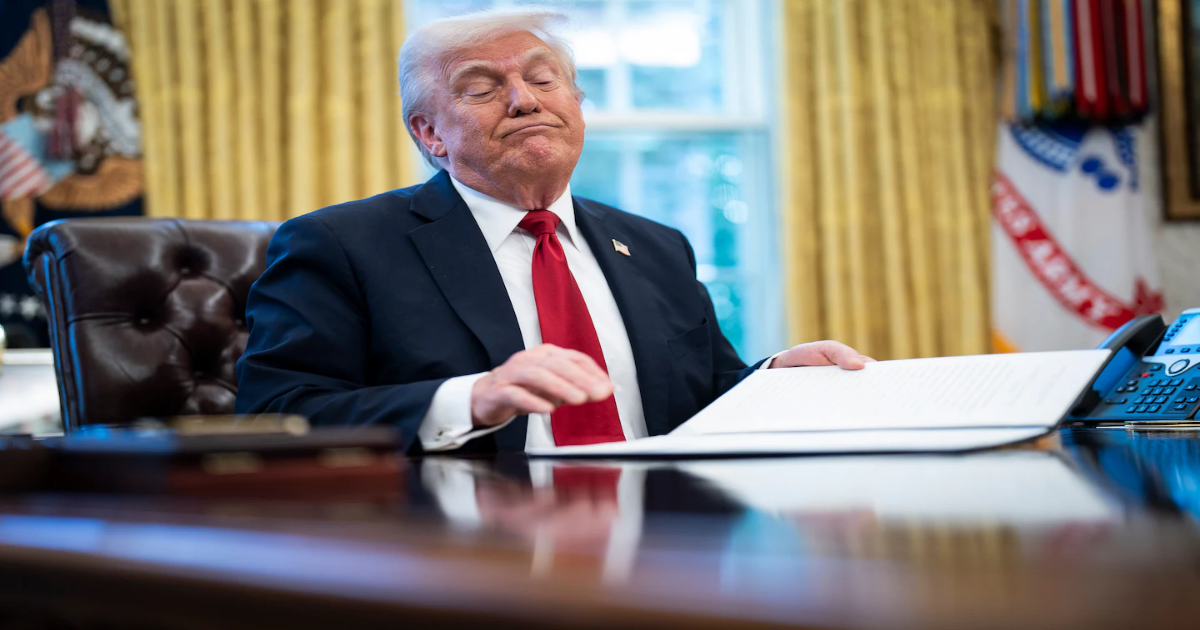Lord, liberate us from President Donald Trump’s “Liberation Day,” as Trump has christened this coming Wednesday.
Trump has already “liberated” his country from the inconvenience of due process or expectations of civil rights. But his freedom crusade escalates this week, when he shall also “liberate” America from affordable cars, a stable economy and its closest allies.
On Wednesday, Trump will unleash a new round of global trade wars. Some are expected to come in the form of broad tariffs on either all countries or maybe just “10 to 15” major trading partners, with the exact targets yet to be determined. (Yes, you read that right: Days before announcing sweeping, once-in-a-century tariffs, even the White House apparently doesn’t know what they will cover.) Separately, he has singled out worldwide automobile imports for tariffs — first on finished vehicles and then on auto parts.
The auto tariffs alone could be catastrophic. They will raise prices for consumers, to the tune of 13.5 percent (an average of $6,400 for each new car), the Yale Budget Lab estimates. Trump told NBC News over the weekend that he was indifferent to — perhaps even rooting for — sharp hikes.
“I couldn’t care less, because if the prices on foreign cars go up, they’re going to buy American cars,” Trump said. “I hope they raise their prices, because if they do, people are gonna buy American-made cars.”
It’s an odd political message from a guy who promised to lower the cost of living. And, if he thinks his tariffs will only raise prices of foreign cars, he’s dead wrong — for at least two reasons.
First, many of the parts that go into “American-made” cars come from abroad (electrical components from Asia, engines from Germany, steel from Canada, steering wheels from Mexico, etc.). This means costs will rise for U.S. auto plants’ inputs. Some of those costs will be passed along to American consumers. Some might also be absorbed by automakers themselves, which could in turn mean less investment and fewer manufacturing jobs.
Second, when foreign product prices go up, domestic producers typically raise their prices, too. That’s because they face less competition (which is usually the explicit point of tariffs). For example, after Trump raised import taxes on foreign-made washing machines in 2018, domestically produced washing machines got much more expensive as well.
New cars aren’t the only products expected to grow more expensive if higher auto tariffs persist. Prices for used vehicles will likely rise, too. So will auto insurance since it will cost more to repair or replace cars damaged in accidents. There’s some evidence that auto loans could also get costlier.
Trump and his economic advisers crow that his tariff agenda will bring in eye-popping amounts of revenue — upward of $6 trillion over the next decade, claims White House aide Peter Navarro. This number seems impossible since it assumes consumers will continue spending as much as they do now (which they likely won’t once confronted with higher prices).
But if it were correct, this would represent the largest tax hike on Americans since World War II. It would also be a regressive tax since lower-income households disproportionately bear tariff costs. In other words, poor people will suffer most from Trump’s supposed liberation agenda.
Already, American consumers of all income classes (and political persuasions) are souring on the Trump economy.
The University of Michigan’s latest consumer sentiment survey data were ugly, and reflected rising risks of “stagflation,” as my colleague Heather Long noted. Two-thirds of consumers expect unemployment to rise in the year ahead. That’s the highest reading since 2009 (when, you may recall, the country was in the depths of a global financial crisis). Meanwhile, consumers’ expectations for long-term inflation hit a three-decade high.
This is despite the fact that Trump inherited an economy that was the envy of the world. The United States outpaced its peers on growth and hiring, and appeared to be wrestling inflation under control. Now, Trump’s economic policies are not only sabotaging that progress; they’re dragging down the global economy, too.
But there do appear to be some winners.
Not long ago, China seemed on the verge of its own economic self-destruction. The White House’s mistakes have since given the country a second wind. Beijing has begun recruiting disaffected and discarded American scientists, who have historically been the U.S. economy’s golden goose. And on Sunday, China announced a regional trade pact with South Korea and Japan, forged in response to Trump’s tariffs.
In just over two months, Trump has driven two of our most important economic and military allies into China’s arms. This is especially astonishing — or impressive? — given the historical resentments that these three East Asian countries have harbored for one another. In fact, Sunday marked the trio’s first economic dialogue in five years. Meanwhile, Europe and Canada are banding together against the United States as well.
This Trump-style “liberation” is getting awfully expensive — and lonely.
